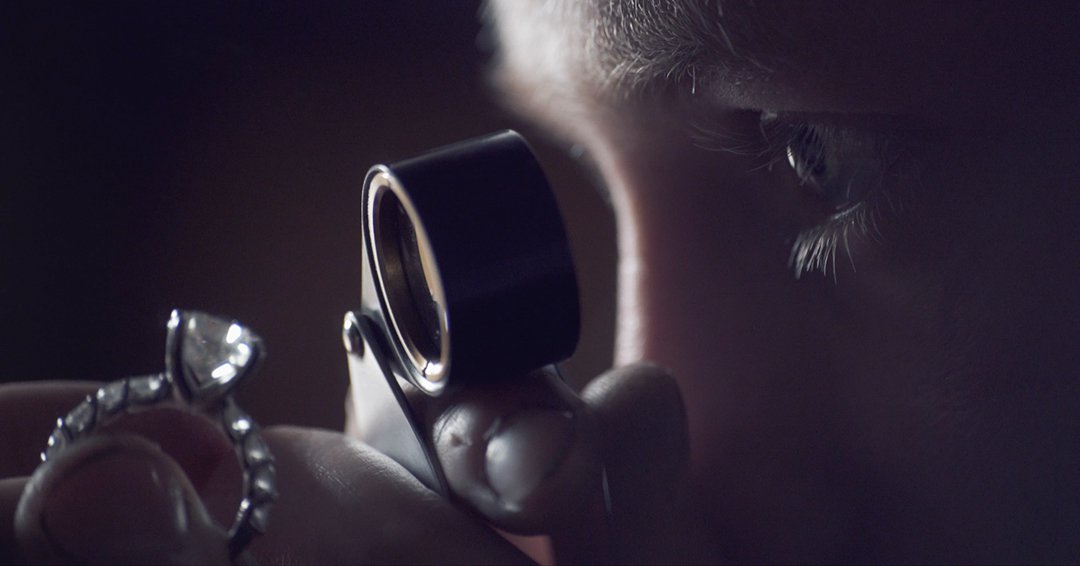
Halfway through an undergraduate degree at the Birmingham School of Jewellery, a future additive manufacturing lead at Cooksongold and an associate of Innovate UK’s Knowledge Transfer Partnership (KTP) programme, comes to a realisation.
“I was a terrible jeweller and I needed to do it all in CAD and print it,” Maria Paparozzi-Shipman modestly tells TCT.
From that point until the end of her degree, Paparozzi-Shipman proceeded to make her collections without touching a single piece of jewellery: Designed in CAD, the pieces would then be printed, polished through a third party, and stones set by someone else.
“I’m a bit of a magpie and then the science comes afterwards,” Paparozzi-Shipman says of her penchant for jewellery aesthetics, and less so the technical aspects of jewellery manufacture. “It’s like, ‘let’s create the Mona Lisa.’ – ‘Okay, well how are we going to do it?’ It’s more about the design aesthetic for me and then the engineering comes in afterwards, and we’ll solve the problems in how to get there.”
This has been her vocation ever since – first at Cooksongold, and now Diamond Centre Wales (DCW), as she implements 3D printing technology within the bespoke jewellery manufacturer through an initial 24-month contract.
“We want to create a really immersive way of designing jewellery that’s completely bespoke,” she tells TCT of her aims at DCW. “It can be made quite simply, we know how sustainable the manufacturing is, we can do it all in house, and we have a massive team of traditional jewellers behind us that then make sure it has the integrity of a traditional piece of jewellery.”
She is now three-quarters of the way through that contract, with the development of printer parameters for the production of white gold parts on an Alpha Laser AL3D-METAL 200 selective laser melting (SLM) machine well underway. Alpha Laser is dubbed by Paparozzi-Shipman as the ‘ones to look out for’ in the jewellery space, owed primarily to the use of a cartridge system to load materials into the system that reduces powder handling. A 600 x 600 mm footprint, 50µm laser spot and 200W fibre laser only help to facilitate the printing of fine details in an office-sized space. DCW also considered Binder Jet technologies, but were put off by the uncertain shrinkage rates during sintering.
As the company moves forward with SLM, which will supplement existing casting methods, training has been given to five employees as part of Paparozzi-Shipman’s knowledge transfer endeavours. Slowly, as they inch closer to the end of the partnership, production of very bespoke parts is expected to commence, with a target of two-thirds of the 25-40 rings that are produced per week at DCW to be transitioned to additive manufacturing.
“It’s about slowly embedding [3D printing] and making the business strategy really strong,” PaparozziShipman explains. “I’d say a large proportion of this role is checking that there is an appetite for it in the market and what we need to do to make sure that the return on investment, and it’s a big investment still for any company, is attractive to the managing directors.”
To ensure the investment in 3D printing technology is value for money, DCW will not only look to leverage the technology’s personalisation capabilities, but also tackle ‘articulated and moving pieces’ such as hinges and springs, which ‘have more of a story to them.’ Progress will be made here before the contract is up in the summer, while white gold parameters on the Alpha Laser machine are expected to be finalised and a service bureau, which is intended to act as the manufacturing method for jewellers like DCW, will be soft launched to a select few customers too.
Greater detail of the work Paparozzi-Shipman has carried out with DCW will be available come the contract’s end, with the business case for the continued use of 3D printing at the company needing to be proved out. The sense is, though, that 3D printing has found a new home in the Welsh Valleys that DCW resides.
“The jewellers prefer a printed part over a cast part, just purely because of the time it takes to fill in a pore,” Paparozzi-Shipman says. “It is going to take some time [on the CAD side]. The CAD team are really on board with it, but for the design rules that are completely different to the casting design rules, it takes some time to get those things in place to be the best designs for the process.”
Want to discuss? Join the conversation on the TCT Additive Manufacturing Network.
Get your FREE print subscription to TCT Magazine.
Exhibit at the UK's definitive and most influential 3D printing and additive manufacturing event, TCT 3Sixty.
Bagikan Berita Ini















0 Response to "How Diamond Centre Wales is incorporating 3D printing into its ... - TCT Magazine"
Post a Comment